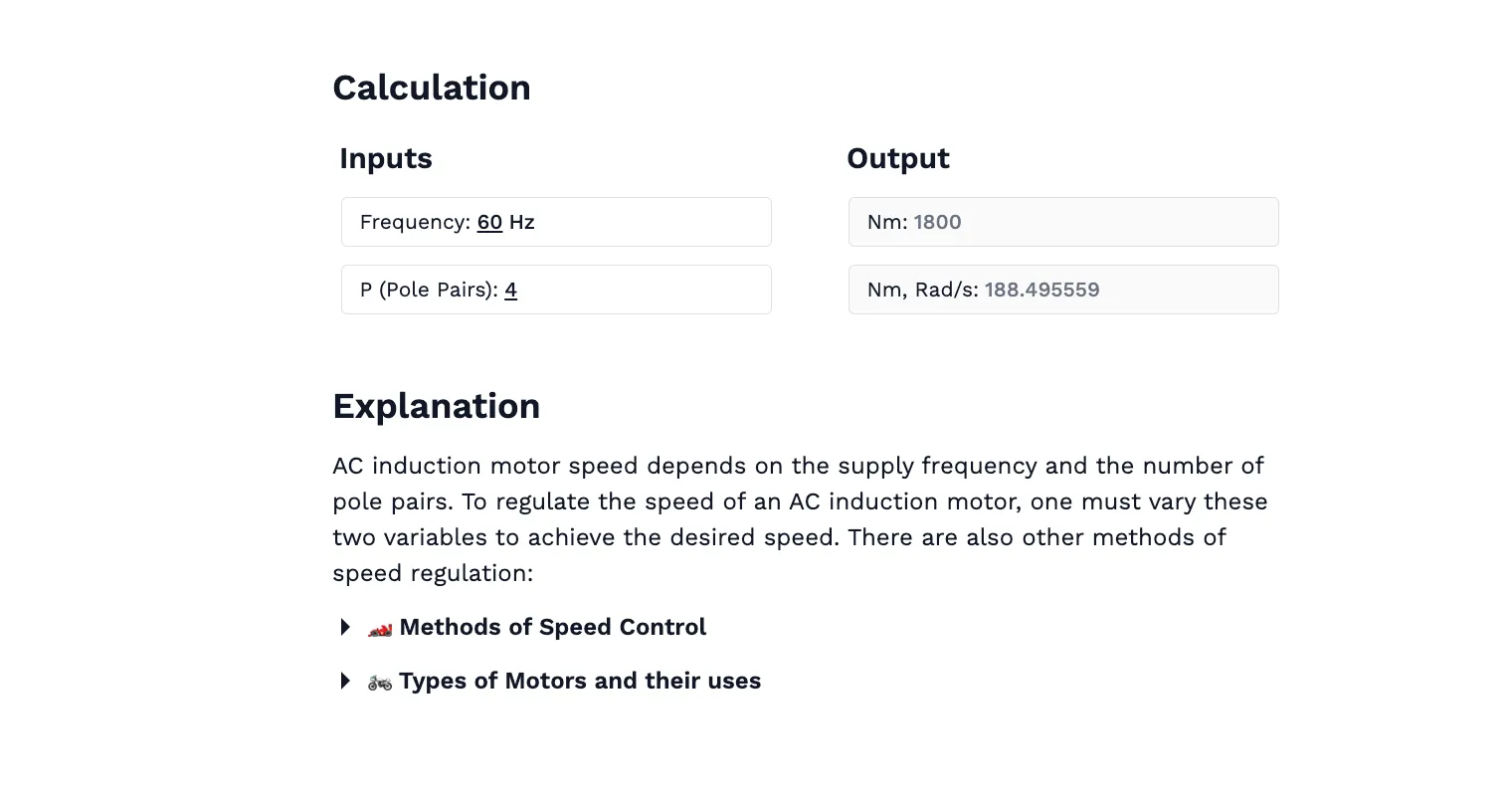Free AC Induction Motor Speed Calculator. Step-by-step, engineering-grade tool with downloadable report.

This template is not available yet. You can sign up and create it yourself!
Or let us know if you'd like to be notified when it’s ready:
About this calculator
The AC Induction Motor Speed Calculator helps users quickly determine the motor speed of an AC induction motor by inputting the supply frequency and the number of pole pairs in the motor. This tool is essential for estimating motor performance, making it easier to assess whether the motor meets design specifications or if adjustments are needed to achieve the desired speed.
This calculator is for:
- Electrical engineers designing or optimizing motor-driven systems.
- Maintenance technicians evaluating motor performance during operation.
- Manufacturers selecting appropriate motors for various industrial applications.
The tool offers quick feasibility checks, allowing users to assess the motor’s operating speed and identify any discrepancies between the expected and actual performance. While this calculator provides a fast solution, manual methods to calculate motor speed involve using tables and charts related to motor specifications, which can be time-consuming. The automated approach streamlines this process and minimizes errors.
For further reading on AC induction motor speed calculations, textbooks such as "Electric Machinery Fundamentals" by Stephen Chapman and "Electrical Machines, Drives, and Power Systems" by Theodore Wildi offer comprehensive discussions on motor behavior, operation, and speed control techniques.
Engineering templates
Common calculators
Design guides
FAQs
What factors influence the speed of an AC induction motor?
The motor speed is primarily determined by the supply frequency and the number of pole pairs in the motor. External load and slip also play a role in the actual operating speed.
What is the role of pole pairs in determining motor speed?
The number of pole pairs directly impacts the motor’s synchronous speed. A higher number of pole pairs results in a lower speed for the same supply frequency.
How does supply frequency affect motor speed?
The supply frequency determines how fast the magnetic field within the motor rotates, which in turn dictates the motor's speed. A higher frequency results in a faster motor speed.
Learn about the benefits of using CalcTree on engineering projects!


